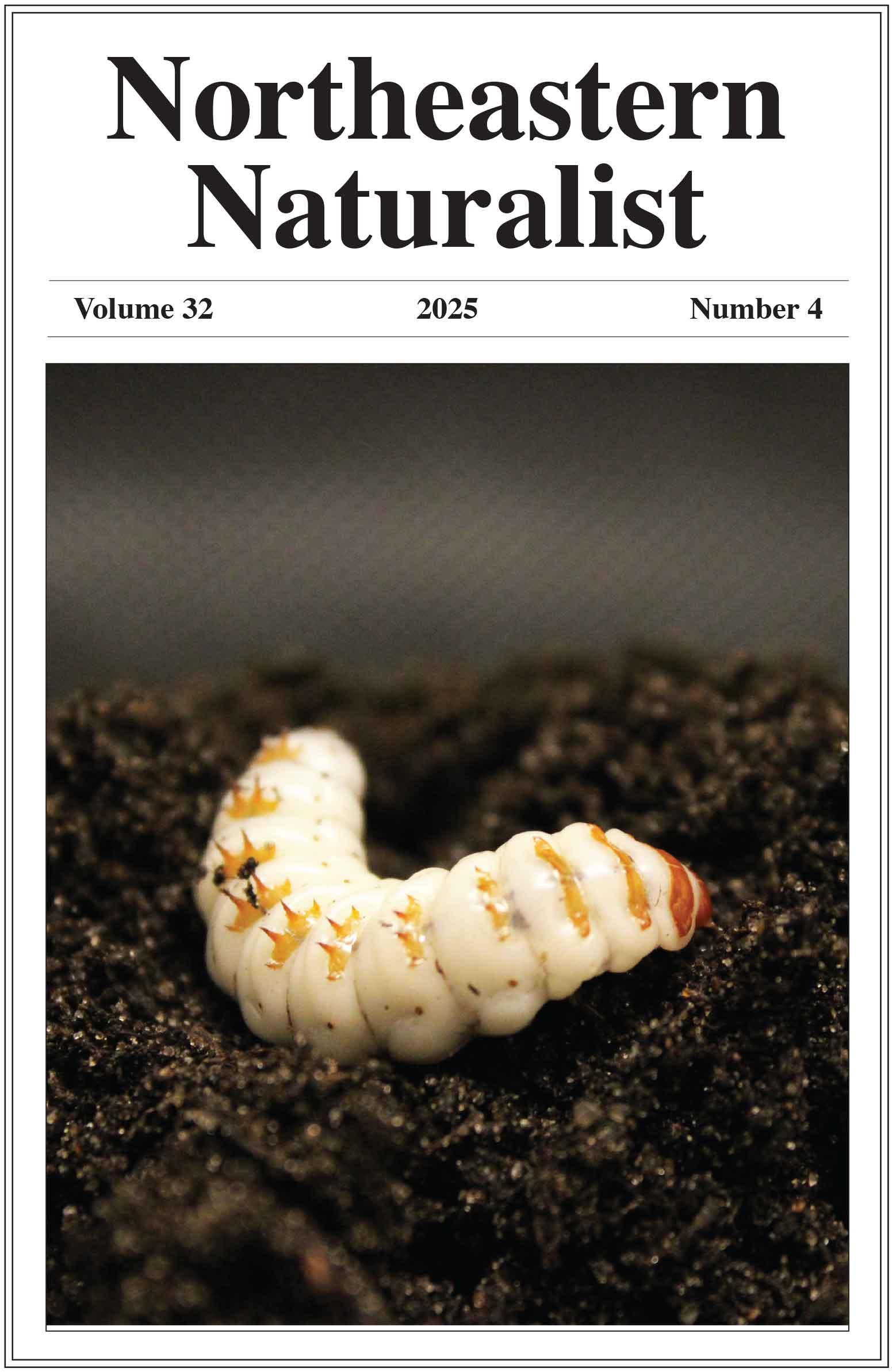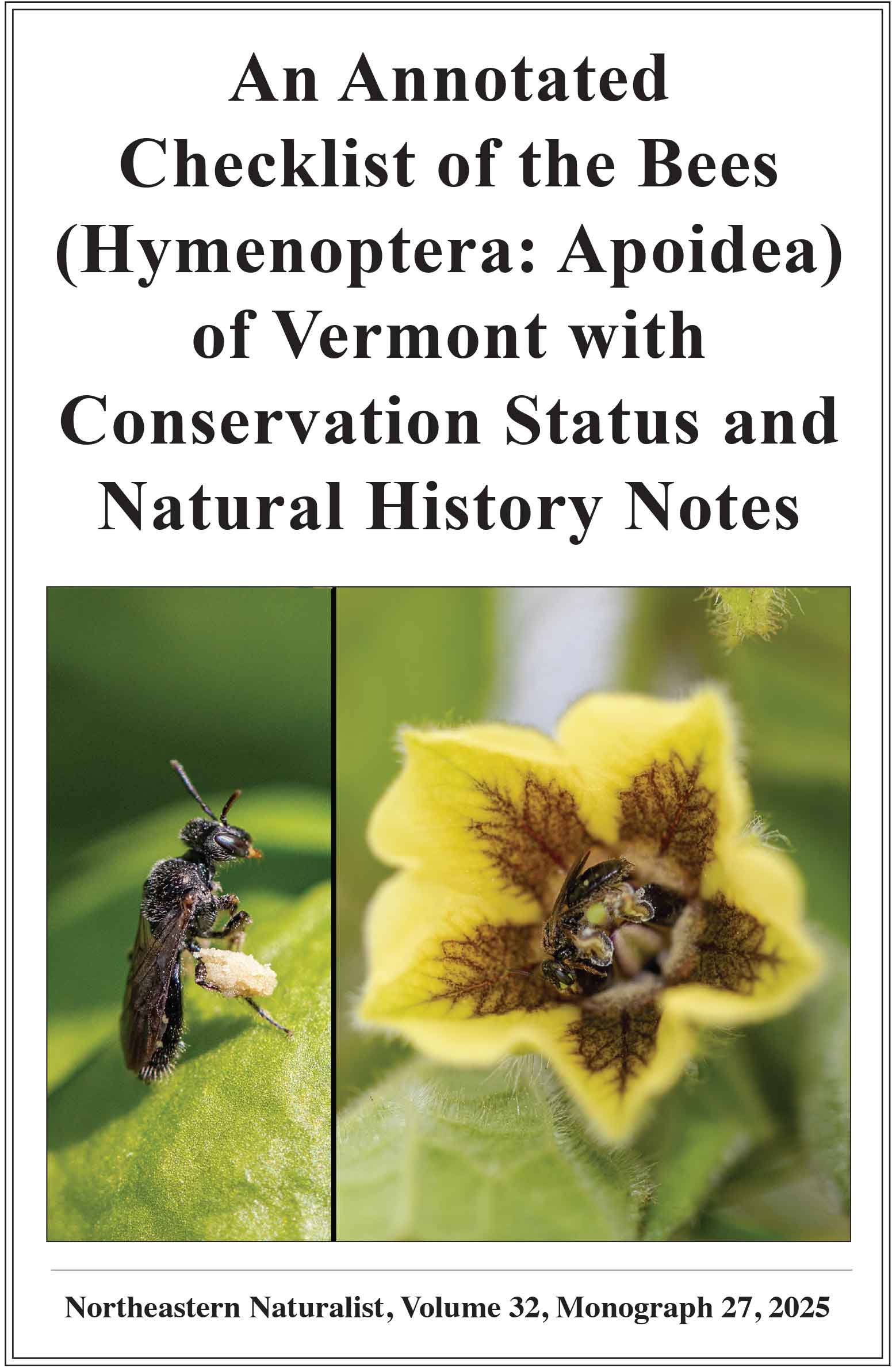Life History of the Ornate Box Turtle (Terrapene ornata) in the Sandhills of Western Nebraska
John B. Iverson*
*Department of Biology, Earlham College, Richmond, IN 47374.
Northeastern Naturalist, Volume 31, Special Issue 12: T77–T117
First published early online: 3 August 2024
Abstract
I studied population demography and life-history trait variation of Terrapene ornata (Ornate Box Turtle) from 1981 to 2019 on and near the Crescent Lake National Wildlife Refuge in the Sandhills of western Nebraska. Most captures were made along drift fences (~1200 m) between wetland and upland habitats (609 individually marked turtles captured 2684 times), supplemented by data from telemetry of 37 females, and dissections of road-killed animals. The adult sex ratio was 1.5 females per male. Recapture histories for data from 1981 to 2000 indicated annual female survival rates of 0.932. Survival of juveniles (based on actual captures) were 0.86 for the first year after spring emergence, 0.932/yr for the next 2 years, and 0.99/yr for the next 8 activity seasons. Based on recaptures, females reach maturity in 12–16 years (14 being typical) at ~110 mm plastron length (100 mm carapace length). Long-term capture histories (12–37 yrs) of 37 full adults nearly all showed positive slopes, and 14 had slopes significantly greater than zero, suggesting indeterminate growth. Some telemetered females appeared to nest within their home ranges, but some undertook forays over 1 km away. All observed nesting (n = 22; 28 May–17 June) was overnight into the early morning. Clutch size varied from 1 to 6 eggs (mean = 3.6) and tended to increase with body size, but egg size (mean = 11.9 g) was not related to body size. Clutch mass averaged 11.3% of gravid female body mass. Individual females produced 0–2 clutches/year. Upon hatching, neonates buried below or near their nest site and descended to nearly 1 m below the surface for their first winter. Survival of 21 nests to hatching was 57.1%, but only 7 hatchlings from an estimated 75 eggs (9.4%) were recovered from those nests the following spring. Survival analyses indicated that the population increased by about 22% per generation (~28 yr). The importance of the permanent wetland for hydration associated with nesting and for summer estivation was clear based on my telemetry and recapture data
![]() Download Full-text pdf (Accessible only to subscribers. To subscribe click here.)
Download Full-text pdf (Accessible only to subscribers. To subscribe click here.)
Access Journal Content
Open access browsing of table of contents and abstract pages. Full text pdfs available for download for subscribers.
Issue-in-Progress: Vol. 33(1) ... early view
Check out NENA's latest monograph and Special Issue:













 The Northeastern Naturalist is a peer-reviewed journal that covers all aspects of natural history within northeastern North America. We welcome research articles, summary review papers, and observational notes.
The Northeastern Naturalist is a peer-reviewed journal that covers all aspects of natural history within northeastern North America. We welcome research articles, summary review papers, and observational notes.